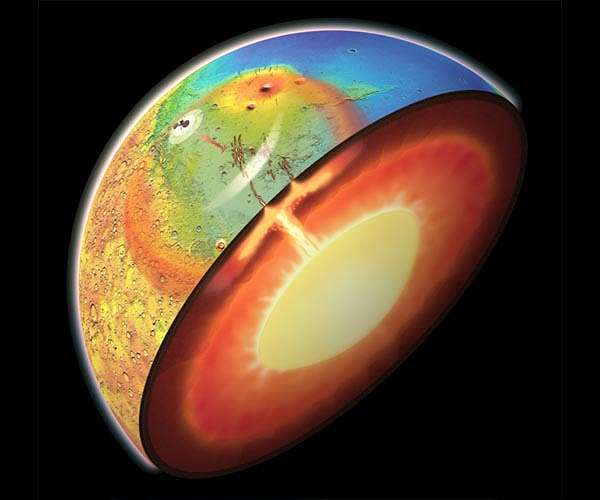New Martian rock reveals clues about volcanic history on the Red Planet
by Riko Seibo
Tokyo, Japan (SPX) Jul 14, 2025
In a major breakthrough, scientists from Chengdu University of Technology have analyzed a newly discovered Martian meteorite that could help explain how volcanoes once shaped Mars. The meteorite, named Northwest Africa (NWA) 16254, is a rare type known as a gabbroic shergottite and offers a unique glimpse into the planet’s deep interior and ancient volcanic systems.
The research, published in the first issue of the new planetary science journal Planet, was led by Dr. Jun-Feng Chen of the university’s Research Center for Planetary Science. The team used advanced imaging and geochemical tools to study how the meteorite formed, revealing that it crystallized in two stages. First, it solidified deep beneath the Martian surface under high pressure, forming magnesium-rich minerals. Later, as the magma moved closer to the surface, it cooled more slowly, creating iron-rich minerals and plagioclase in its outer layers.
These findings suggest that NWA 16254 originated from a long-lived, geochemically depleted mantle source, meaning the part of Mars it came from had already lost some of its original chemical ingredients over time. This type of rock is extremely rare-only one other similar meteorite, QUE 94201, has ever been found. Both likely came from the same type of magma and point to volcanic activity that occurred under low-oxygen conditions, challenging current ideas about how Mars evolved.
The meteorite’s coarse texture, typical of slow-cooling rocks that form below ground, shows it didn’t erupt like typical lava but instead solidified in chambers within the Martian crust. Its low oxygen levels, supported by specific mineral signatures, reveal that parts of Mars’ mantle may have stayed chemically reduced for billions of years.
To uncover these details, the team used high-tech instruments like a mineral analyzer and laser-based mass spectrometry. These tools helped them track tiny chemical changes within the rock, particularly between its inner and outer mineral zones. Such insights could lead to a better understanding of how Martian magma systems worked and when different layers of the planet formed.
Research Report:Petrography and geochemistry of a newly discovered Martian gabbroic shergottite NWA 16254
Related Links
College of Earth Science, Chengdu University of Technology
Mars News and Information at MarsDaily.com
Lunar Dreams and more

